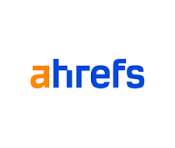Module 1: Excel for Analytics
Master spreadsheets for data analysis: data validation, cleaning, lookups (XLOOKUP/VLOOKUP), pivot tables, dynamic arrays, and advanced formulas. Build executive summaries and KPI sheets.
Outcomes: Rapidly slice and dice datasets and prototype analyses for stakeholders.
Theory focus: Data types and error propagation in spreadsheets, modeling with tables vs ranges, and best practices for auditability and reproducibility.
Theory: In analytics, spreadsheets function as both a computational engine and a documentation surface. We examine how cell references, named ranges, and structured table references influence model readability and error rates. You will learn why modeling with normalized tables reduces duplication and logically separates inputs, transformations, and outputs for auditing. We discuss precision and rounding pitfalls, circular references, and deterministic vs volatile functions, and how they impact refresh times and reproducibility. The module also contrasts one‑off ad‑hoc analysis with maintainable spreadsheet models that act like small data applications, including conventions for assumptions, scenario toggles, and version stamping so business stakeholders can trace the lineage of every reported metric.
Module 2: SQL & Relational Data
Write robust queries with joins, aggregations, window functions, and CTEs. Profile data quality and build views for downstream analytics.
Outcomes: Confidently extract and combine data from normalized schemas at scale.
Theory focus: Relational modeling, primary/foreign keys, indexing basics, and when to denormalize for analytics performance.
Theory: We ground SQL practice in relational theory, exploring how entities and relationships map to tables and keys. Normal forms reduce anomalies in insert, update, and delete operations; you’ll see how that benefits quality before a single query runs. We dive into query planning: how optimizers evaluate join orders, push predicates, and leverage statistics, plus why indexes accelerate access patterns but can degrade write performance. Window functions are framed as a calculus for ordered analysis—running totals, percent contributions, and cohort tagging—while CTEs improve clarity and maintainability. Finally, we contrast star schemas for BI against transactional schemas, and outline safe denormalization to simplify models without corrupting business logic.
Module 3: Data Cleaning & Preparation
Standardize formats, handle missing values and outliers, parse dates, and create calculated fields. Build reproducible cleaning workflows.
Outcomes: Deliver trustworthy datasets and document assumptions explicitly.
Theory focus: Missingness types, bias introduction, and data lineage in analytics environments.
Theory: Data quality determines the ceiling of insight. We formalize missingness mechanisms (MCAR, MAR, MNAR) to choose imputation strategies that do not fabricate signal. Outlier handling is framed through the lens of influence on descriptive statistics and downstream models, distinguishing genuine extreme values from data errors. You will learn canonical parsing problems—time zones, encodings, locale differences—and how to guard against silent data corruption. We emphasize auditable pipelines: explicit assumptions, reversible transformations, and lineage capture so every aggregate can be traced back to source records. The goal is to institutionalize cleaning as a transparent, opinionated process rather than an undocumented, one‑off fix.
Module 4: Descriptive Statistics
Central tendency, dispersion, distributions, percentiles, correlation, and basic inference to contextualize findings in business terms.
Outcomes: Translate numeric summaries into decisions and hypotheses.
Theory focus: Sampling vs population metrics, outlier influence, and appropriate use of correlation.
Theory: Descriptive statistics are not just numbers—they are summaries of uncertainty. We contrast mean, median, and trimmed means under skewed distributions, show how variance and interquartile range respond to noise, and explain why percentiles are robust for SLA/threshold reporting. Histograms and kernel density plots reveal modality that single metrics hide. We treat correlation as a measure of linear association with strict caveats—non‑linearity, confounding, and spurious correlations—while emphasizing effect sizes and confidence around summaries. You will practice framing findings in managerial language: ranges, expected variability, and practical significance to inform prioritization and next experiments.
Module 5: Visualization with Power BI
Data modeling, DAX measures, relationships, interactive visuals, slicers, and Power Query. Publish and share in the Power BI Service.
Outcomes: Build insightful dashboards aligned to stakeholder questions.
Theory focus: Visual perception, minimizing cognitive load, and KPI design principles.
Theory: We design dashboards as decision tools, not artwork. Using pre‑attentive attributes and Gestalt grouping, you’ll learn how to encode comparisons, part‑to‑whole, and trends with minimal cognitive effort. We discuss semantic data models—facts, dimensions, grain—and how DAX measures encapsulate business logic (e.g., YTD, same‑period last year) consistently across pages. KPI design is framed around leading vs lagging indicators, context bands, and goal thresholds. You will practice progressive disclosure: overviews first, then drill‑downs. Accessibility and color contrast guidelines ensure readability, while layout patterns (Z/F) and spacing create visual rhythm that guides attention to what matters.
Module 6: Visualization with Tableau
Data connections, joins/blends, calculations, LOD expressions, parameters, and dashboards for exploration and storytelling.
Outcomes: Ship performant, interactive stories with clear narratives.
Theory focus: Grammar of graphics concepts as applied in Tableau; avoiding misleading views.
Theory: Tableau’s visual grammar enables rapid iteration when grounded in data storytelling principles. We examine chart affordances—why bar charts outperform pies for categorical comparisons—and use LOD expressions to define metrics at business grain independent of view. Parameters and actions turn reports into analytical tools, while performance best practices (extracts, filters, context) keep interactions snappy. We discuss ethical visualization: avoiding dual‑axis distortions, truncated scales, and deceptive encodings. Narrative structure (setup‑conflict‑resolution) helps sequence dashboards so stakeholders understand the “why,” not just the “what,” and leave with clear decisions.
Module 7: Python for Analytics
Use Pandas and NumPy to transform datasets, compute KPIs, and prepare inputs for BI tools. Automate repetitive tasks and validations.
Outcomes: Create analysis scripts that are reliable, readable, and reusable.
Theory focus: Vectorization vs iteration, data types, and performance considerations.
Theory: We position Python as the analyst’s power tool for repeatability. Vectorized operations in NumPy and Pandas exploit contiguous memory layouts and C‑level loops, making transformations orders of magnitude faster than naive iteration. You will learn schema contracts for DataFrames—dtypes, nullability, and index semantics—and why explicit typing prevents silent bugs. We also cover I/O performance, chunking large files, and idempotent scripts that can be safely re‑run. Testing small data transformations (doctests/pytest) and linting enforce standards so your notebooks evolve into maintainable, production‑adjacent analytics codebases.
Module 8: Business Analytics & KPIs
Identify problem statements, define metrics and dimensions, and model dashboards for stakeholders in sales, finance, marketing, and operations.
Outcomes: Align analytics outputs with decision‑making and ROI.
Theory focus: North‑star metrics, leading/lagging indicators, and avoiding vanity metrics.
Theory: Metrics are representations of reality—useful but imperfect. We formalize metric trees that decompose a north‑star into actionable levers, clarify dimensionality (who, what, where, when), and define unambiguous business grain. You’ll evaluate trade‑offs between precision and timeliness, reconcile across systems of record, and detect metric drift when upstream logic changes. We discuss selection bias, survivorship bias, and how poorly designed metrics create perverse incentives. The outcome is a written metric contract: name, definition, formula, owner, refresh cadence, and caveats, ensuring organization‑wide alignment and auditability.
Module 9: Analytics Projects & Storytelling
Scoping, data diary, hypothesis framing, versioning, and stakeholder reviews. Convert analysis into narratives and decision options.
Outcomes: Deliver clear stories that drive action, not just charts.
Theory focus: Narrative arcs, cognitive biases, and ethical communication of uncertainty.
Theory: We treat analytics as a product with users and outcomes. You will practice writing problem statements, success criteria, and scoping to avoid analysis paralysis. A data diary records every assumption and pivot, while version control preserves reproducibility. We frame analyses as falsifiable hypotheses and confront cognitive biases—confirmation bias, anchoring—that derail objectivity. Storytelling techniques transform findings into options with trade‑offs and risks, while expressing uncertainty honestly through intervals and scenario ranges. The goal is executive‑ready narratives that change decisions, not slide decks that archive results.
Module 10: Automation & Reporting
Refresh schedules, data gateways, alerts, and report distribution. Use Python/Power Query to automate ingestion and checks.
Outcomes: Keep analytics reliable and up‑to‑date with minimal manual effort.
Theory focus: Change data capture, refresh orchestration, and data governance basics for analysts.
Theory: Reporting systems succeed when they are boringly reliable. We design refresh architectures that minimize data staleness while respecting quotas and SLAs. You will learn change data capture patterns to detect deltas efficiently, and orchestrate refresh dependencies to avoid partial updates. Monitoring is framed beyond “up or down” with data quality checks, anomaly detection, alert routing, and runbooks for incident response. Governance topics include access control, PII handling, audit logs, and cataloging so analysts can safely reuse assets. Automation is not about removing humans; it’s about moving their attention to interpretation and improvement.




































